Protecting Library user data
Data matters to the UVA Library. It helps identify what resources are heavily used and what groups of people use them. The Library uses data to assess trends and inform collection building, to make decisions about service desk staffing and service improvements, and to improve teaching and learning services. Data is critical to making smart financial decisions and justifying budget spending and requests.
But some data is sensitive, and the Library is guided by a stringent professional code of ethics, as well as by University policy and state law, to be good stewards of all data. Although all U.S. libraries are exempt from Freedom of Information Act requests about how people use libraries, the Library is still subject to court orders and vulnerable to security breaches. Further, some companies allow the collection of user data that can be used for surveillance purposes, a practice that libraries strongly oppose. For instance, in 2021 a legal research and data brokerage firm, LexisNexis, signed a multimillion-dollar contract with the U.S. Immigration and Customs Enforcement Agency to provide on-demand location tracking.
How does the UVA Library use data?
- To inform collection building through usage trends.
- For outreach to underserved user groups.
- To identify areas that could be enhanced by Library instruction materials.
- To verify Library usage by individual schools and units.
- To locate lost items.
- To validate survey results.
- To corroborate staffing decisions by location and peak usage times.
A recent Library project led by Director of Strategic Technology Partnerships & Initiatives Robin Ruggaber focused on reducing risk to user privacy by eliminating or anonymizing more than a decade of circulation data. The project team first extracted data from the Library systems that run the online catalog, interlibrary services, and request services. The data was then either deleted or anonymized and stored in a new database that can be queried by librarians for business reasons.
Special Collections circulation and digitization requests must be stored for five years due to insurance requirements. However, most circulation data the Library collects is now only retained for 90 days, and the Library is working on policies that will formally codify new data collection procedures and timelines.
Data the Library keeps helps answer the questions of when, where, how long, and how much Library materials are used, and provides some demographic details about the people who use those materials. Sensitive personal information is removed, leaving valuable details about the circulating item
and the date, time, and location of transactions; subject, language, and item type (book, DVD, etc.); and borrower profiles including school and department.
Ruggaber noted that the project to eliminate or anonymize data — a collaboration with UVA’s Chief Information Security Officer, University Records Officer, Institutional Review Board for Social and Behavioral Sciences, and Institutional Research and Analytics — was a significant success. “We have achieved what many thought was impossible,” said Ruggaber, “to provide a way to search and mine anonymized library usage data critical for improving library services while also radically reducing risk to user data.”
This story originally appeared in the Library’s Annual Report for FY 2022-23. Download the full PDF to read more.
The roots of Women’s History Month (plus recommended books)
Guest post coauthored by Cecelia Parks (Undergraduate Student Success Librarian), and Alison Booth, (Professor of English and Academic Director, Scholars’ Lab).
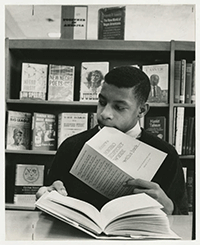
Every year in March, countless blog posts, think pieces, exhibits, and programs are created for Women’s History Month, but the origins of Women’s History Month are rarely explored in these pieces – particularly the entwined development of Black History Month and Women’s History Month.
The development of Women’s History Month was closely related to efforts to acknowledge African American history. Carter G. Woodson, who is honored in UVA’s own Carter G. Woodson Institute, founded Negro History Week in 1926. Woodson picked the second week of February for Negro History Week because it contained both Abraham Lincoln’s and Frederick Douglass’ birthdays. Fifty years later, Negro History Week expanded to the whole month of February to become Black History Month.
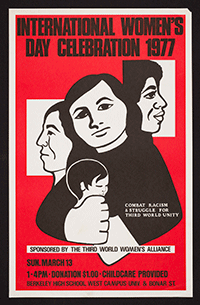
Women’s History Month followed a similar trajectory. The celebration originated with International Women’s Day in the early 20th century and was then associated with the women’s suffrage movement. In 1978, following the advent of Black History Month, Women’s History Week was first celebrated in California during the week that contained International Women’s Day (March 8). Congress authorized the national celebration of Women’s History Week in 1981, and March was officially designated as Women’s History Month in 1987.
Although Women’s History Month and Black History Month are both aligned with important dates for those communities, the celebrations deliberately take place during the school year (intentionally not in the unsettled time of the start of the year) and have always been aimed at influencing the curriculum. The officially designated months grew out of the same movement that led colleges and universities to develop courses, majors, and centers dedicated to Black and Women’s Studies, as they were then called. These changes came in large part from student demand – including at UVA.
Many public conversations about Black History Month and Women’s History Month focus on biographies of well-known members of those communities. The research areas that came out of the 1970s, however, were not solely focused on famous forebears. The UVA Library has many books related to topics that originated from the research and thought that came out of the women’s movement in the 1960s and 1970s; some recommendations of new and classic fiction and nonfiction books by or about women are below. You can see more recommended books in Virgo.
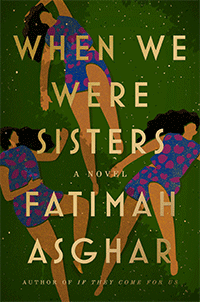 “When We Were Sisters: A Novel” (2022), by Fatimah Asghar
“When We Were Sisters: A Novel” (2022), by Fatimah Asghar
In her novel, Fatimah Asghar follows three sisters who are left to raise one another after their parents die. The girls’ experiences test what sisterhood means as they also navigate being Muslim women in America.
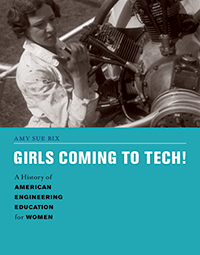 “Girls Coming to Tech!: A History of American Engineering Education for Women” (2013), by Amy Sue Bix
“Girls Coming to Tech!: A History of American Engineering Education for Women” (2013), by Amy Sue Bix
In “Girls Coming to Tech,” Amy Sue Bix examines the history of women in engineering education, which has historically been perceived as fundamentally and exclusively masculine to a greater degree than other STEM or medical disciplines. She demonstrates that women persevered in studying engineering and diversifying the field even as they were accused of only studying engineering to find husbands (among other obstacles they encountered).
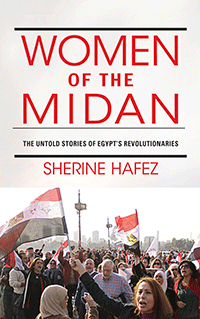 “Women of the Midan: The Untold Stories of Egypt's Revolutionaries” (2019), by Sherine Hafez
“Women of the Midan: The Untold Stories of Egypt's Revolutionaries” (2019), by Sherine Hafez
Hafez brings to light the crucial role women played in the Arab Spring, particularly in Egypt. She uses firsthand testimony to demonstrate that women protested in the street and used the revolutionary moment to renegotiate many of the structures that governed their lives. Hafez also uses these women’s experiences to discuss the role of the gendered body in revolutionary struggles.
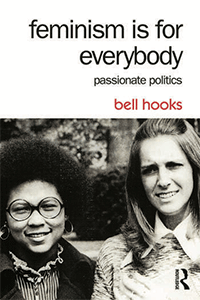 “Feminism Is for Everybody: Passionate Politics (Second Edition)” (2015), by bell hooks
“Feminism Is for Everybody: Passionate Politics (Second Edition)” (2015), by bell hooks
In hooks’ short primer on feminism, she answers the question “what is feminism?” while critically evaluating contemporary feminist movements and discussing issues related to feminist ideology, such as reproductive justice, sexual violence, race, class, and sexuality.
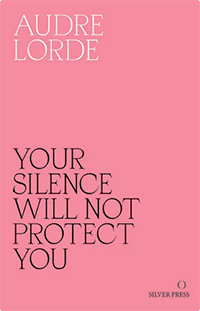 “Your Silence Will Not Protect You” (2017), by Audre Lorde
“Your Silence Will Not Protect You” (2017), by Audre Lorde
“Your Silence Will Not Protect You” is the first major collection of Audre Lorde’s poetry and prose, which are as relevant today as they were when they were first published decades ago. Lorde was an intersectional feminist thinker and writer who described herself as “Black, lesbian, mother, warrior, poet” and wrote about race, gender, sexuality, class, and more.
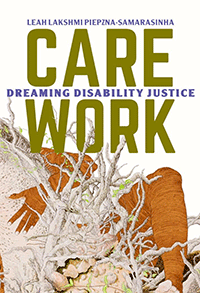 “Care Work: Dreaming Disability Justice” (2018), by Leah Lakshmi Piepzna-Samarasinha
“Care Work: Dreaming Disability Justice” (2018), by Leah Lakshmi Piepzna-Samarasinha
Leah Lakshmi Piepzna-Samarasinha explores the disability justice movement, which centers the leadership and experiences of sick, disabled, trans, and Black and brown people, in this short collection of essays. Among the topics she explores, Piepzna-Samarasinha calls for “collective access” – making access a joy and responsibility for everyone.
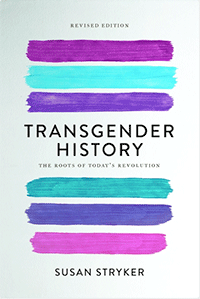 “Transgender History: The Roots of Today’s Revolution (Second Edition)” (2017), by Susan Stryker
“Transgender History: The Roots of Today’s Revolution (Second Edition)” (2017), by Susan Stryker
Stryker’s foundational work covers major events, movements, and leaders in American transgender history from the mid-20th century to today, providing context for today’s fights for transgender rights and demonstrating that trans folks have always been here.
 “Knocking Myself Up: A Memoir of My (in)fertility” (2022), by Michelle Tea
“Knocking Myself Up: A Memoir of My (in)fertility” (2022), by Michelle Tea
Michelle Tea shares the story of her journey to pregnancy as a 40-year-old, uninsured queer woman in this intimate, funny memoir. She writes about her strong friendships, the world of fertility medicine
Working toward access and affordability in higher education
Library resources have the capacity to enlighten and empower, but only for those who have the time, know-how, and ability to use them — making equitable access a complex concept. Financial challenges are another pressing issue for college students and can interfere with their education in myriad ways, such as through food insecurity or concerns over the cost of textbook materials.
In recent years the Library has implemented staff-wide practices to improve access, including the adoption of design principles that place accessibility at the center of user decision-making; taking care to emphasize that Library resources are available fully free of change — something not all incoming students are aware of; and providing broad accessibility training for staff. Other focus areas include:
Accessibility
Coursework
The Mellon-funded Federated Repositories of Accessible Materials for Higher Education project continues working to ensure that material remediated for accessibility is preserved, organized, and made discoverable for reuse, thus reducing the duplication of staff effort to improve service to people with disabilities. Recent work by UVA Library Software Engineer Ray Lubinsky has focused on improving the delivery of search results within an accessible interface, allowing users to easily find the right texts, while project partner Benetech, a software company, has concentrated on math and science materials, using artificial intelligence to automate the process of making complex symbols accessible for low- vision or blind readers.
Implementation of and advocacy for electronic course reserves has meant significantly increased ease of access for students who may face mobility or health challenges. Contrasted with print reserves, electronic reserves enable students to log in and access course materials from anywhere in the world.
Accessible and inclusive spaces
Inclusive design is built from the ground up in the new main library, which is undergoing a major renovation until 2024. New entrances, inclusive restrooms, and better elevators will make for more pleasant and safe experiences for all visitors. Plus, the new public connection linking to Clemons Library will ensure easy, weather-protected access between major Library locations.
After a renovation completed in 2021, the Fine Arts Library now includes spacious, private, gender-inclusive, wheelchair-accessible restrooms on the first and second floors.
The Special Collections Accessibility Working Group has undertaken a number of projects, such as improving exterior signage, staff accessibility training, and the procurement of new height-adjustable tables for the reading room thanks to support from the UVA Parents Fund.
Tools for education
Close partnerships with University accessibility services, such as the Student Disability Access Center, the Office for Equal Opportunity and Civil Rights, and the University Captioning Coordinator, seek to make accessibility information easy to find through the Library website. This includes extensive guidance about captioning, assistive technology, and ways to get assistance for yourself or for others.
Additionally, all documents available on the Library website, including assessment reports, annual reports, and more, are now fully accessible PDFs.
The Library’s Access Services team works closely with the Student Disability Access Center to provide a consistent level of access to content for students requesting an accessibility accommodation. Both Access Services and SDAC scan print materials for students who use a screen reader or other assistive technology, and services are coordinated such that students receive accessible content in a consistent format and level of processing. Access Services also acquires or borrows physical copies of requested materials for students whose accommodation is best served by accessing content in a physical format. By coordinating these services, the Library and SDAC ensure a consistently high service level that remains flexible enough to meet the needs of an individual student.
Finally, the Library received funding from the Provost’s Office in spring 2022 to cover more than 30 hours of proactive captioning of audiovisual materials, including the entire William Elwood Civil Rights Lawyers Project Collection, as well as open educational resources, teaching and learning materials, and items from the Robertson Media Center.
Affordability
Open educational resources are high-quality learning materials that can be used, edited, and shared free of charge. The Library offers extensive information about finding and creating OER; as well as regularly recurring information sessions; all with the goal of lessening expenses for students while maintaining high-quality educational materials. Additionally, the Library recently launched OER affordability and equity grants to offer assistance and incentives to instructors wishing to use or create OER materials.
Open educational resources programs are guided by Judith Thomas, Director of Faculty Programs, with a team that includes Teaching and Learning librarians Bethany Mickel and Haley Gillilan, as well as Open Access Librarian Winston Barham.
The open access movement is another way education is made more affordable, by encouraging the creation of published academic articles without paywall restrictions.
The School of Data Science has worked closely with the Library through subject liaison and Associate Director of Research Data Services + Social, Natural, and Engineering Sciences Jenn Huck to make open access practices part of the departmental culture. Additionally, the UVA Faculty Senate endorsed repository-based open access in their open access guidelines, underscoring the importance of Library work to help faculty understand options for open access publishers and licensing.
Finally, UVA is proud to have been accepted into Virginia’s Academic Library Consortium’s “Curriculum Driven Acquisitions” Program beginning in fall 2022. Through the program, the consortium receives a list of assigned course texts and uses central funds to acquire unlimited-use e-books for the Library’s collection. Through this mechanism, the program relieves financial pressures on students, and serves to build the Library’s collection in an organic manner. UVA Library’s acceptance into the program is a result of collaboration between the UVA Bookstore and Scholarly Resources and Content Strategy staff, particularly members of the Library’s Acquisitions team.
This story originally appeared in the Library’s Annual Report for FY 2022-23. Download the full PDF to read more.
From black holes to Dungeons & Dragons: 5 unique events at the UVA Library
Sure, you can visit the University of Virginia Library to borrow books (we have more than 5 million of them!), to find a cozy study space, or even to use a 3-D printer, but did you know we offer events ranging from workshops to performances for UVA and the Charlottesville community throughout the year?
Below, check out five upcoming events for those who love music, science, crafting, and gaming. All Library events are free.
1. Making Noise in the Library
 The Making Noise in the Library series brings artists into the Music Library for free performances. On March 17, come enjoy a concert by Carlehr Swanson, a jazz singer, songwriter, and UVA Ph.D. candidate. On March 31, spend the afternoon with Corey Harris, an accomplished guitarist, songwriter, and bandleader who has carved his own niche in blues. Both performances will be in the Music Library and are free of charge. Refreshments will be provided, no registration required.
The Making Noise in the Library series brings artists into the Music Library for free performances. On March 17, come enjoy a concert by Carlehr Swanson, a jazz singer, songwriter, and UVA Ph.D. candidate. On March 31, spend the afternoon with Corey Harris, an accomplished guitarist, songwriter, and bandleader who has carved his own niche in blues. Both performances will be in the Music Library and are free of charge. Refreshments will be provided, no registration required.
- When: March 17 and March 31; 1:00 p.m.
- Where: Music Library
- Calendar Link - Swanson; Calendar Link - Harris
2. Make a Book Safe Workshop
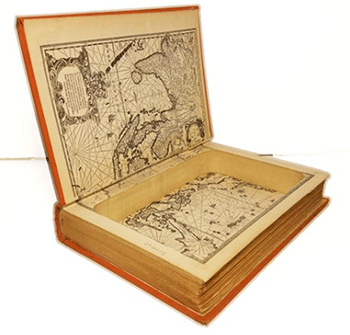 Bring an old book to hollow out and turn into a safe place to store your valuables! A limited number of books will be available; all other tools will be provided. No experience is needed. It only takes an hour to make a safe, so you won’t need to stay for the whole workshop time. Registration is required.
Bring an old book to hollow out and turn into a safe place to store your valuables! A limited number of books will be available; all other tools will be provided. No experience is needed. It only takes an hour to make a safe, so you won’t need to stay for the whole workshop time. Registration is required.
- When: Friday, March 24; 2 – 5 p.m.
- Where: Scholars’ Lab TinkerTank (Clemons, third Floor)
- Registration is required: View “Make a Book Safe Workshop” on the Library calendar
3. What Happens Inside Black Holes?
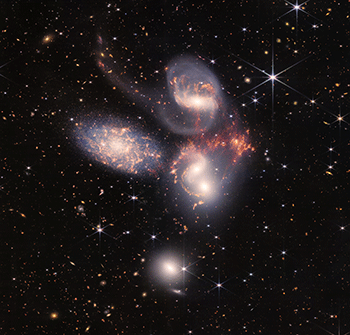 This talk exploring what happens inside black holes is the second of three talks in a series on “Unsolved Mysteries of the Universe” by UVA astronomy professor Kelsey Johnson.
This talk exploring what happens inside black holes is the second of three talks in a series on “Unsolved Mysteries of the Universe” by UVA astronomy professor Kelsey Johnson.
The three talks are the first in the new “STEM for Everyone” popular science lecture series. The STEM for Everyone lectures are designed for a general undergraduate audience and are open to the public. Refreshments will be provided, and there will be a small reception at the end of the talk. There will also be a prize drawing for attendees (prizes include a signed edition of Johnson’s book, “Constellations for Kids,” which is listed consistently in Amazon’s top 10 children’s astronomy books, as well as a signed art print by Johnson). Registration is required.
Read more about the three-lecture series.
- When: Monday, March 27; 6 – 7 p.m.
- Where: Commonwealth Room - Newcomb Hall
- Registration is required: View “What Happens Inside Black Holes?” on the Library calendar
4. Tote Bags & T-Shirts
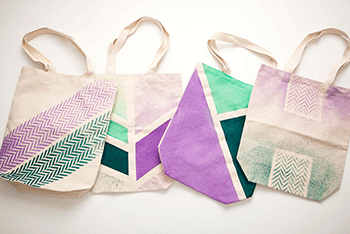 Design your own tote bag! Pick from different sizes, sew your tote bag together, and learn how to upcycle old T-shirts to make interesting graphics. Materials will be provided, but if you have old T-shirts with cool graphics that you don’t mind cutting up to put on your tote bag, feel free to bring those along.
Design your own tote bag! Pick from different sizes, sew your tote bag together, and learn how to upcycle old T-shirts to make interesting graphics. Materials will be provided, but if you have old T-shirts with cool graphics that you don’t mind cutting up to put on your tote bag, feel free to bring those along.
No sewing experience required. Drop in anytime between 3 – 7:30 p.m. to make your tote bag. Registration is required.
- When: Sunday, April 9; drop in 3 – 7:30 p.m.
- Where: Scholars’ Lab TinkerTank (Clemons, third Floor)
- Registration is required: View “Tote Bags & T-Shirts” on the Library calendar
5. Intro to Mini Making and D&D Basics
 Have you ever been curious about the tabletop gaming hobby? Heard of Dungeons & Dragons, but not sure how it works? Want to paint a tiny figurine that you can show off to your friends? In this workshop, we’ll be discussing the basics of tabletop gaming as a form of group storytelling, learning how to build characters, and painting mini-figures for use in play.
Have you ever been curious about the tabletop gaming hobby? Heard of Dungeons & Dragons, but not sure how it works? Want to paint a tiny figurine that you can show off to your friends? In this workshop, we’ll be discussing the basics of tabletop gaming as a form of group storytelling, learning how to build characters, and painting mini-figures for use in play.
All materials are provided and no prior experience needed. Registration is required.
- When: Friday, April 28; 1 – 3 p.m.
- Where: Scholars’ Lab TinkerTank (Clemons, third Floor)
- Registration is required: View “Intro to Mini Making and D&D Basics” on the Library calendar
Building a sustainable future
The Library Sustainability Working Group created a Sustainability Plan this year to support the University’s goals to “advance sustainability leadership and impact by incorporating environmental, economic, and equity considerations in decision-making” by 2030. The core group was made up of staff with a passion for sustainability representing various perspectives and expertise.

The mission of the working group was to create a plan to “partner with the University and broader community to better steward our resources; collaborate in sustainability education, research, and outreach; and act responsibly within our environment and our community.” The Library, with connections to nearly every academic and administrative office on Grounds, has a unique opportunity to advocate for change. Library staff have indicated a strong desire to see changes that make a long-term impact not just within the Library, but in the many University functions and services with which they interact.
The LSWG did extensive research to develop the Sustainability Plan. The group collaborated with both the UVA Office for Sustainability and UVA Facilities Management to access water consumption and waste production data; they reviewed previous sustainability work done at the Library and studied other academic libraries’ sustainability plans; and they gathered input from stakeholders. Because sustainability is inextricably tied to equity, the Library Inclusive Excellence plan also informed the development of the Sustainability Plan. The plan states: “Such work must be done with an equity lens, and with the awareness that climate change has drastically more impact on local and global communities that are already threatened by racial inequities.”
The LSWG Sustainability Plan has resulted in strategic sustainability goals with deliverables and a timeframe for execution and evaluation of success. Goals include reducing energy consumption in Library spaces, reducing potable water consumption, performing a waste audit to decrease use of paper products
and minimize waste, converting Library vehicles away from fossil fuel, working with vendors who have sustainable practices, strengthening support for sustainability research, and advocating for sustainability across Grounds by supporting initiatives like open access and open educational resources.
A permanent Sustainability Committee will be appointed to coordinate, measure, and report on progress toward the goals of the Sustainability Plan. “The Library has had a long-standing commitment to sustainability,” Carla Lee, the Deputy University Librarian states. “This group was able to build on the excellent work of the Green Community formed in 2006. We’ve seen great commitment on an individual and Library basis, and we look forward to harnessing that commitment to achieve the 2030 goals.”
This story originally appeared in the Library’s Annual Report for FY 2022-23. Download the full PDF to read more.

This Women’s History Month, explore the Collective Biographies of Women
Guest post by Cecelia Parks, Undergraduate Student Success Librarian.
For Women’s History Month, we are highlighting the Collective Biographies of Women, a digital humanities project led by Alison Booth, Professor of English and Academic Director of the Scholars’ Lab. You can access the Collective Biographies of Women here.
Below, Booth answers questions about this massive project, which serves as a database of historical women as well as an annotated bibliography of more than 1200 books.
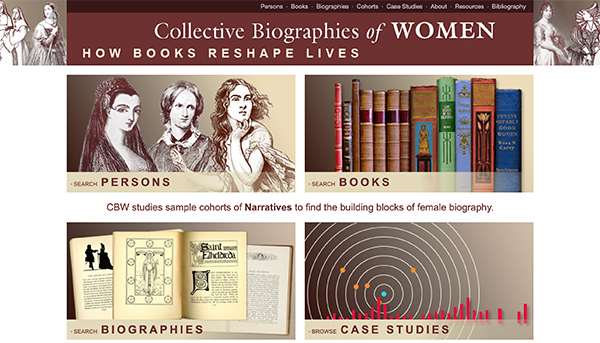
Q. How would you describe the Collective Biographies of Women (CBW) project?
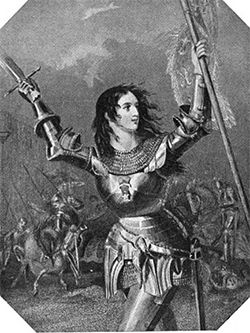
A. The Collective Biographies of Women (CBW) project began with my work on a book, How to Make It as a Woman (University of Chicago Press, 2004). With the help of many graduate research assistants, I assembled an annotated bibliography of more than 1200 English-language books of three or more short, factual life stories about women. The former E-text Center and then the Scholars’ Lab helped me design and build an online bibliography, and with a fellowship from the Institute for Advanced Technology in the Humanities, we created a database. It is not a repository of the texts; each collection record in the database is linked to WorldCat and HathiTrust if possible.
The biographies often are skillfully written and curious. Joan of Arc is the all-time favorite subject, according to CBW, with a short biography in 69 different books; but there are many women in war, saints, political leaders, Frenchwomen, all kinds of women overlapping with Joan of Arc’s types. About two-thirds of the subjects are one-offs, some of them so obscure we haven’t located an obituary or other source. I don’t agree with the values of these books, whose authors were confident of the superiority of white, Euro-American, Christian culture, but we can see the purposes they served and recover a rich storehouse of women’s history and changing mores.
Q. How did you become interested in collective biographies of women?
A. I was contributing an essay on short biographies of Queen Victoria, who was gaining scholarly attention in the 1990s, and I had published an article on the pioneering art historian, Anna Jameson. Jameson had published a collection called Female Sovereigns and I needed to know, how many of this sort of book were there?
I just can’t let go of how many versions of women’s lives were circulating well before the start of women’s studies in universities. We’re familiar with the saying, “well-behaved women seldom make history,” now the title of Laurel Thatcher Ulrich’s book. I say, “good” women often made history, and, if you believe their biographers, were good housekeepers and mothers, too. Even contemporary feminist scholars assumed that printed accounts only detailed lives of a few notorious or high-ranked figures, and my research with CBW shows a different perspective.
Q. How do you use the Collective Biographies of Women in your own research?
A. I’m generally working on something called prosopography — roughly, a series of parallel lives to make an argument about a group identity, such as a nation or a minority. I have relied on CBW data such as occupational types or networks of tables of contents for many conference papers and keynotes and over a dozen articles and book chapters. I continue to work with graduate students, undergraduate students, and UVA Library staff to continue to develop the CBW project to make it more usable and highlight different minority groups within the biographies.
What are we trying to find out? Broadly, we use the CBW as a tool to categorize and rediscover historical women and their surprising feats, including rescuing passengers from shipwreck and winning a prize for sculpture, who are linked to other resources such as Wikipedia and SNAC (Social Networks and Archival Context). We also want to document the way biographies of different types of women are constructed, using an XML schema on a sample corpus. Narrative elements in CBW include spatial data, and we have experimented with mapping events in the lives as well as the publications.
Q. What would you like to highlight from the Collective Biographies of Women ?
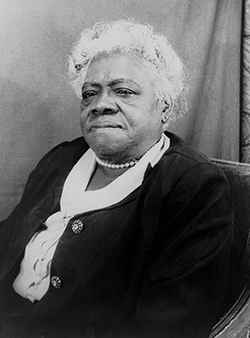
A. You can see how collective biographies resemble the lists of biographies that are put online during Black or Women’s History Month. Over the years, we have focused on the 429 African American women whose biographies are included in CBW texts. We see that the 1890s brought a surge in collective biographies of Black women, followed by renewed advocacy in the 1930s and 1970s.
Some are very well known, such as Mary McLeod Bethune (1875-1955) (see the SNAC biography), who has twelve CBW chapters. Anyone researching this remarkable political and educational leader would find not only the archives through SNAC but also the evidence of changing versions of her life across the 20th century in comparison to other subjects in the same books.
In “Lifting as They Climb” by Elizabeth Lindsay Davis (1933), a “sibling” or subject in the same content list as Bethune, Mrs. Amelia Tolbert, now has a SNAC record that is only populated by a link to CBW. Without dedicating more time to researching the one-off mention of this person, we are constrained by copyright and have not found the text to fill in more information, but she has a record in CBW just like her more well-known counterparts.
Though the books featured in CBW were published between 1830 and 1940, such books have been published for many centuries and continue to be popular today. Here are a few collective biographies of women published in recent years and available through the UVA Library:
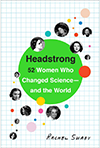
“Headstrong: 52 Women Who Changed Science – and the World” (2015), by Rachel Swaby
Rachel Swaby profiles 52 female scientists from Nobel Prize winners to less well-known scientists in “Headstrong: 52 Women Who Changed Science—and the World.” This book is a rebuttal to previous coverage of these women that focused on their domestic roles as wives and mothers.
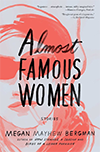
“Almost Famous Women: Stories” (2015), by Megan Mayhew Bergman
The short stories in Megan Mayhew Bergman’s collection are all based on real historical women who were, as the title suggests, almost famous. Bergman’s stories give them a second chance at fame and shows them in all their human complexity.
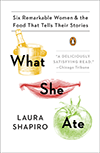
“What She Ate: Six Remarkable Women and the Food That Tells Their Stories” (2017), by Laura Shapiro
Culinary historian Laura Shapiro profiles six women through their relationships with food in “What She Ate.” These women were famous in their time and most continue to be well-known today, but Shapiro provides a different perspective on their lives in this book.
Women’s Maker Program welcomes third cohort of student Residents
From Maggie Nunley, Fang Yi, Jenny Coffman, Jennifer Roper, and Bethany Mickel, of the Women’s Maker Program Steering Team.
We’re pleased to announce that the Women’s Maker Program has accepted its third cohort of Residents.
The Women’s Maker Program supports a makerspace program that’s designed to help increase Residents’ confidence and interest in STEM and makerspace technologies, improve their sense of belonging in the field, and better prepare them for future careers in the STEM workforce.
As a result of Resident feedback, the Program recently expanded into two semesters in order to fully meet the needs and interests of the participants. This spring semester, the Residents will begin learning makerspace technologies, design thinking, and growth mindsets. The semester will culminate in a Girls Maker Camp, in partnership with Tech Girls, for local middle school girls. The Camp will be held at the Robertson Media Center and feature a variety of workshops taught by the Women’s Maker Program Residents. In the fall semester, the Residents will have the opportunity to deepen their expertise in makerspace technologies while working in teams to tackle a community project.
To learn more about the work of the Women’s Maker Program and celebrate the accomplishments of the 2023 Residents, register to join us on April 21st from 2:30 - 3:30 p.m. for an end-of-semester showcase. The showcase will be held in Clemons 407 and also online through Zoom.
The Women’s Maker Program has been generously funded by a grant from the Jefferson Trust for the 2021-2023 cohorts. We are grateful to the Jefferson Trust for their support.
Meet the 2023 Women’s Maker Program Residents:
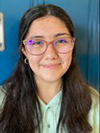
Gaby Flores (she/her) is from Houston, Texas. Gaby is majoring in aerospace engineering and hopes to contribute to space exploration and attend graduate school in the future.
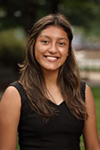
Chelsey Ojeda (she/her) is from Amelia County, Virginia, and is interested in civil engineering. She hopes to reduce the environmental footprint within the construction industry and eventually start her own business. At UVA, she is involved in undergrad research and is a Clark Scholar. In her free time, she dabbles in photography and botany, but mainly enjoys being outdoors.
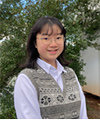
Padma Lim (she/her) is from Hong Kong. Padma is a systems engineering major. She wants to be more compassionate, courageous, and strong so that she can help more people and give back to society. Padma also hopes that she can inspire others (such as those who are minorities and women) to be passionate about STEM and provide opportunities for them to realize their dreams.

Elizabeth Armstrong, who is from Portland, Oregon, is double majoring in aerospace and mechanical engineering. She is unsure what job she wants in the future but hopes to attend graduate school and conduct research on alternative fuel sources.

Alicyn Stewart was born and raised in Leesburg, Virginia. She hopes to double major in biochemistry and French on the pre-medical track. She currently is interested in pursuing toxicology but is open to whatever the future has in store for her.

Sarah Francis is from Richmond, Virginia. Sarah is a first-year undergraduate at UVA who plans to major in computer science with a specialization in cybersecurity. In the future, Sarah hopes to work as a software developer and have a role in people management.

Jaiden Murray (she/her) is from Richmond, Virginia. Jaiden plans to major in global public health, on the pre-medical track. She hopes to be a dermatologist, bringing awareness to treating people of color.

Shanique Morrison (she/her) is from Brooklyn, New York. Her major is electrical engineering and she plans to minor in computer science. In the future, Shanique hopes to contribute to astronomical discoveries, specifically as an electrical engineer at NASA.
UVA Library’s Aperio to begin publishing International Journal of First Aid Education
Guest post from Dave Ghamandi, Open Publishing Librarian and Managing Editor of Aperio:
The International Journal of First Aid Education and UVA Library are pleased to announce that IJFAE has joined Aperio, the UVA Library-led open access press.
The IJFAE publishes peer-reviewed articles to advance the knowledge and practices of those involved in first aid and first aid education. The journal aims to increase the helping behaviors of first aid responders during health emergencies and to strengthen community resilience. All articles are made freely available online once they have completed the peer review and production process.
IJFAE’s move to publishing through Aperio coincides with two UVA School of Medicine faculty joining the editorial team: Associate Professors of Emergency Medicine Nathan Charlton, MD and Amita Sudhir, MD are new section editors. They join Editor-in-Chief Dr. Jeffrey Pellegrino and Senior Editor Emily Oliver.
The journal is founded on the Chain of Survival Behaviors (a union of five domains that increases a person’s chance of surviving a health emergency), making it relevant to everyone, regardless of context or medical training. It provides a voice for evidence across all aspects of emergency response, self-care, and public health, supporting educators and training organizations to develop confident, competent, and willing responders.
Aperio, a service of UVA Library, publishes discipline-leading, high-quality open access journals. By removing price and permission barriers, Aperio increases the dissemination, visibility, accessibility, and impact of research and scholarship across disciplines, while providing its journals with a stable and committed institutional home.
“The commitment of UVA Library to open access research coincides with our vision of democratizing first aid education to empower people to be healthier and safer, and we’re excited to push out the great work being done around the globe with this new partnership,” says Pellegrino.
Charlton says, “the International Journal of First Aid Education is an outstanding resource for first aid educators and providers throughout the world. We are delighted to be able to host this journal at the University of Virginia and look forward to expanding the reach and reputation of the journal.” Sudhir added, “Being asked to expand the opportunities for students to create and publish works in the journal internationally will also bring great opportunities for our student researchers across UVA.”
“The ethos of empowering all first responders matches well with Aperio’s goal of increasing access to knowledge for all. As the first journal from medicine and allied sciences in the Aperio portfolio, IJFAE expands the disciplinary scope while strengthening the commitment to the importance of open access publishing,” says Jennifer O’Brien Roper, Director for Digital Strategies and Scholarly Communication.
The International Journal of First Aid Education is the fifth journal in Aperio’s portfolio and is available at http://www.firstaidjournal.org/. The journal remains free for both readers and authors, and past volumes remain available. All articles will continue to be published using a Creative Commons license meaning authors retain their copyright and have the right to attribution.
Learn more about Aperio, the University of Virginia’s open access press
UVA proxy server address change
UVA has made a change in the way it serves proxy URLs for electronic resources. If you access electronic resources directly through links on the Library website (or through tools like JournalFinder or Databases A-Z), you do not need to take any actions.
If you have bookmarks to electronic resources, you will need to update those bookmarks. Please keep reading to understand how to avoid broken links when the old URLs are removed.
What is happening?
UVA is upgrading the server that enables faculty and students to access Library electronic resources from off Grounds.
The URL for UVA’s proxy server changed from proxy01.its.virginia.edu (or proxy.its.virginia.edu) to proxy1.library.virginia.edu. You will need to change all your bookmarks that use the old proxy. For example,
- https://proxy01.its.virginia.edu/login?url=https://search.ebscohost.com/login.aspx?authtype=ip,uid&profile=ehost&defaultdb=a9h
should become
- https://proxy1.library.virginia.edu/login?url=https://search.ebscohost.com/login.aspx?authtype=ip,uid&profile=ehost&defaultdb=a9h
Why should I update my bookmarks?
The old proxy address will continue to work for a short time, but in late spring 2023 the old proxy address will stop working.
If you have bookmarked URLs for electronic resources, you need to update your bookmarks to avoid broken links when the old URLs are removed.
Instructions for updating
You may have just one or you may have dozens of bookmarks that have the old UVA proxy server address.
There are two methods you could use to fix your bookmarks:
- In your browser’s bookmark manager, search for “proxy01.its” and “proxy.its”. Replace each of these with “proxy1.library”. OR,
- Visit the Library website to get the new address directly. All resources on the Library site are up to date, including Virgo, JournalFinder, and the A-Z Database list.
The changes will finalize in late spring 2023.
Thanks to Library IT and Electronic Resources teams for substantial assistance with this piece.
From scrapbooks to zines, new exhibition shows the power of ‘women making books’
“Women Making Books,” a new exhibition in the First Floor Gallery of the University of Virginia’s Albert and Shirley Small Special Collections Library, opens with Phillis Wheatley’s “Poems on Various Subjects, Religious and Moral” (1773), the first published book of poetry by an African American. The book’s frontispiece engraving of Wheatley (who was enslaved by a Boston family) sitting at a desk with a quill in hand is likely well known to most English majors; it is believed to be the first portrait in American history of a woman writing.
Annyston Pennington, a UVA English doctoral student who curated “Women Making Books,” said that the Wheatley volume was one of the first objects chosen for inclusion in the exhibition. But as singular and powerful as “Poems on Various Subjects” is, Pennington was struck by the fact that within the book, Wheatley’s poems are prefaced with the words of her enslavers. “What would it look like if Wheatley had had control over every aspect of this book with her name attached?” asked Pennington. “What does it look like for a woman to be involved in the printing and the letter setting, in the binding and in experimenting with the book form?”
“Women Making Books” dives into this question, exploring women’s contributions to English and North American bookmaking from the mid-18th to the 21st centuries. While some of the exhibition’s objects are authored by luminaries like Wheatley, Virginia Woolf, and Louisa May Alcott, many of the featured works — private scrapbooks, decorative books of woven hair and pressed flowers, and zines — are by unknown or little-known creators. “We wanted to show how women’s domestic labor, crafting, and private practice made contact with the book form and even served as a precursor to zines, which were historically made to be cheap and easily accessible, and often used to convey countercultural messages,” said Pennington, who works as a curatorial assistant in Special Collections.
The exhibition, which opened earlier this month, runs through June 10, in conjunction with the longstanding British Women Writers Conference, which this year will be hosted by the UVA English Department in late May. The theme of this year’s conference is “Liberties.”
“We hope to tell different stories of female agency when it comes to bookmaking,” said Andy Stauffer, a UVA professor of English and co-curator of the exhibition. “We were drawn to objects that still look like books, but have been productively reimagined, recreated, scrambled, or personalized by women of all different backgrounds,” said Stauffer, who is known for his “Book Traces” project, which catalogs and preserves unique copies of 19th-century books and investigates marginalia, inscriptions, and other historical data within them. “This is a visually beautiful and interesting show; it’s full of unexpected, handmade items that use the format of the book and mess with it in creative ways.”
The exhibition, which contains 23 items, is organized chronologically, starting with Wheatley’s volume of poetry and ending with a 2021 work by artist and UVA alumna Golnar Adili that Pennington says “pushes the boundaries of the book.” Adili’s text, titled “She Feels Your Absence Deeply,” is printed on the sides of wooden cubes, reminiscent of children’s alphabet blocks, reminding the viewer that a story can shift, evolve, and be interpreted in many ways.
Take a look below at several objects from the exhibition (with captions derived from the exhibition text), on display through June 10 in the First Floor Gallery of the Small Special Collections Library.
Developing from Victorian hairwork, a phenomenon in which human hair was manipulated into designs inside keepsakes such as brooches, hair albums combine hairwork with the scrapbook. The Lydia J. Ensign hair albums contain 159 locks of hair; many bits are adorned with metallic pins or plaited into designs and labeled with the names of their sources — usually friends or family.
Created by an unknown artist, this “Folk Art Herbarium” album offers a multimedia excursion through the garden — and mind — of a woman in early 20th-century England. Pressed flowers with captions are arranged alongside highly detailed illustrations.
Carrol T. Mitchell produced multiple issues of tabloid-style magazines, such as this one from 1916, in which matters of fashion, entertainment, and gender are accompanied by both illustrations and magazine clippings.
Each element of “Beautifully Brown, Like Me,” a 2018 zine by artist kuwa jasiri Indomela, signals that it is meant to be shared and to spark conversation about anti-Blackness in American art communities.
Artist and UVA alumna Golnar Adili challenges the book form completely with her work “She Feels Your Absence Deeply.” The text is printed on the sides of wooden cubes, which can be arranged to show different images.
Browse by category
Browse by date
- November 2018 (1)
- August 2019 (1)
- November 2019 (1)
- January 2020 (1)
- November 2020 (1)
- January 2021 (1)
- September 2021 (2)
- October 2021 (1)
- November 2021 (1)
- January 2022 (4)
- February 2022 (2)
- March 2022 (2)
- April 2022 (1)
- May 2022 (3)
- August 2022 (1)
- September 2022 (2)
- November 2022 (4)
- December 2022 (3)
- January 2023 (6)
- February 2023 (9)
- March 2023 (11)
- April 2023 (6)
- May 2023 (4)
- June 2023 (3)
- July 2023 (1)
- August 2023 (3)
- September 2023 (5)
- October 2023 (7)
- November 2023 (3)
- December 2023 (5)
- January 2024 (4)
- February 2024 (8)
- March 2024 (2)
- April 2024 (6)
- May 2024 (4)
- June 2024 (1)
- July 2024 (2)
